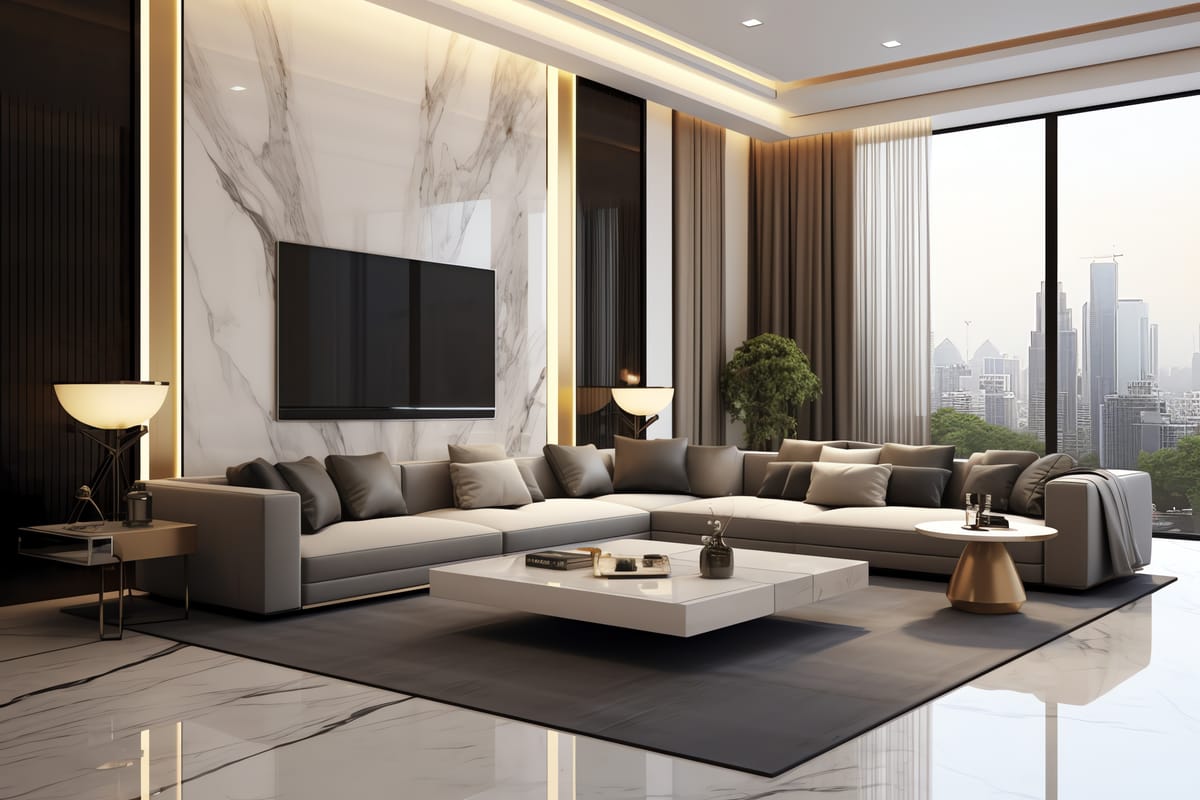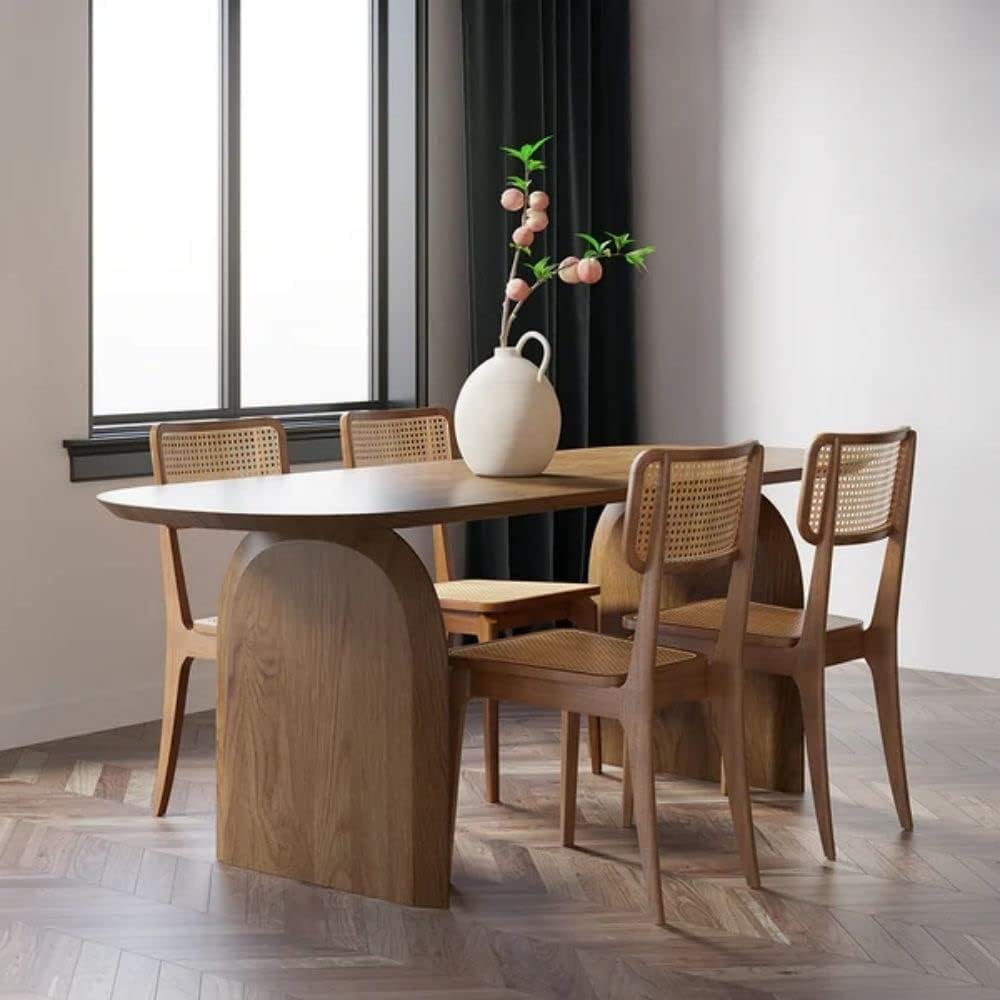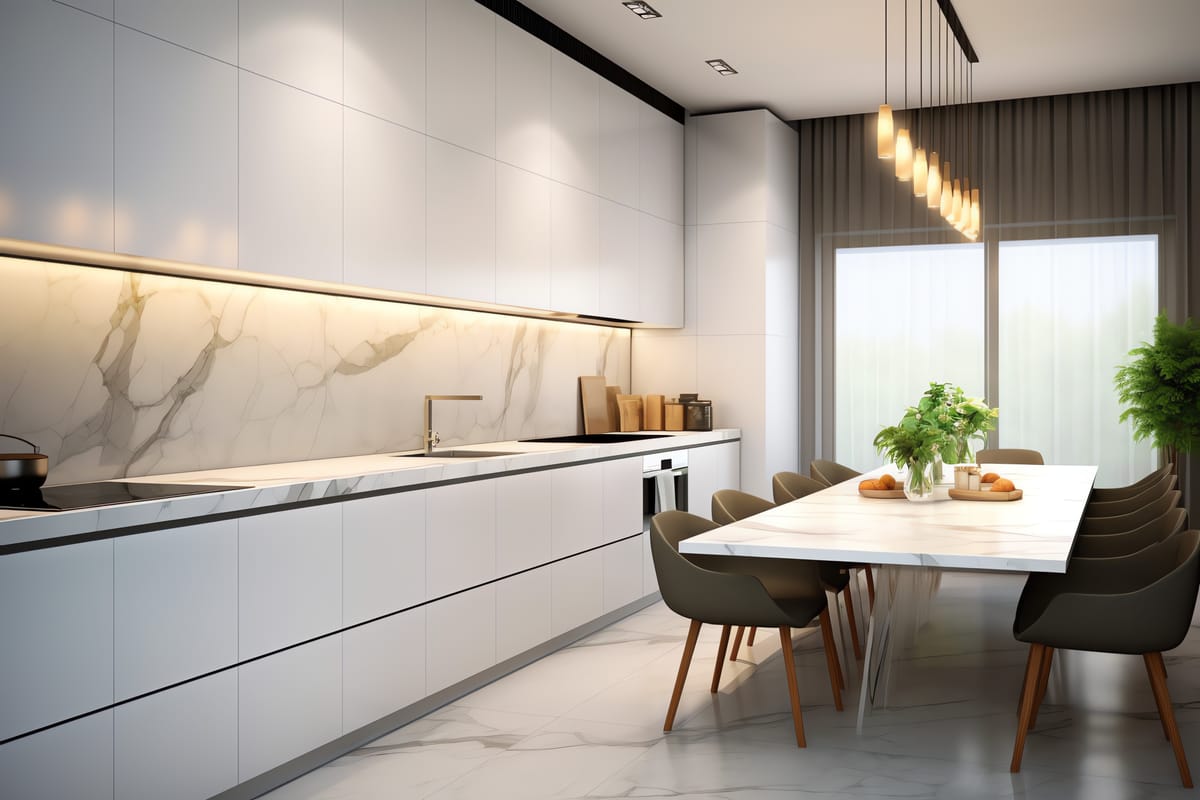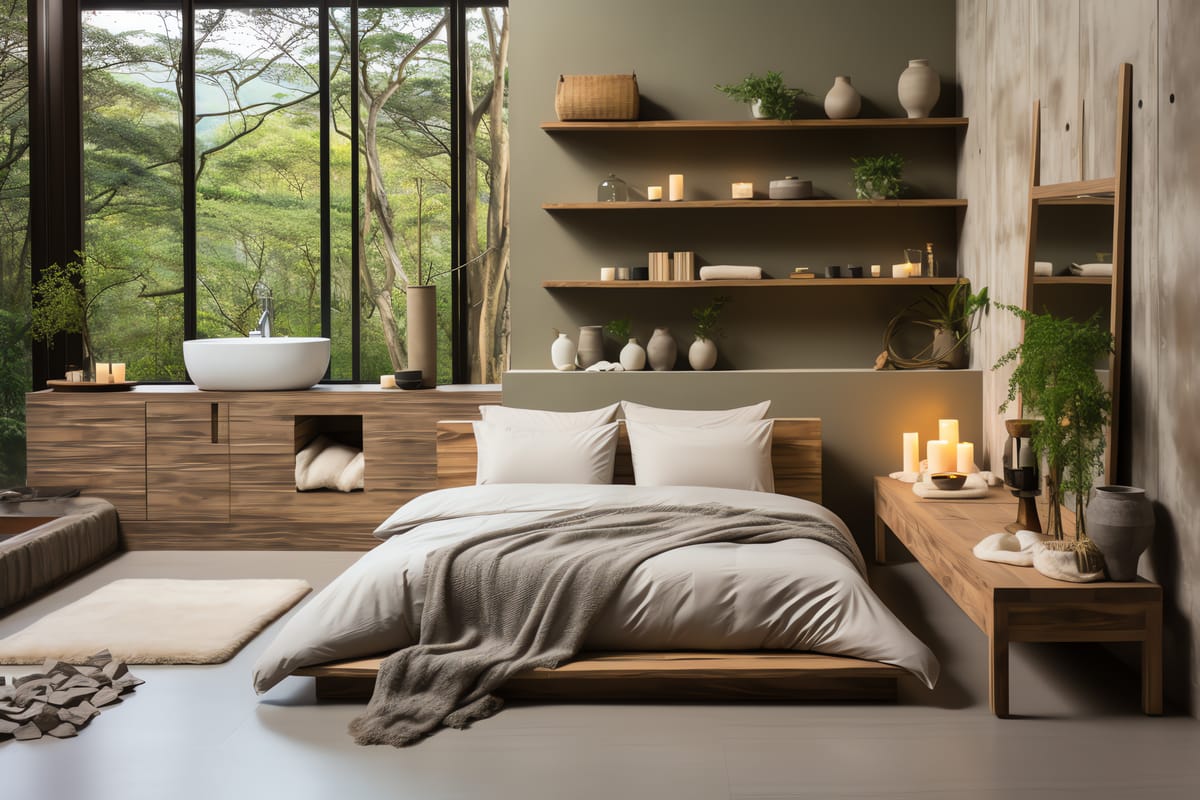Key Takeaways:
- Japandi bedrooms blend Japanese and Scandinavian design principles to create a serene and minimalist space.
- Natural materials, neutral colors, and functional decor are essential elements of the Japandi aesthetic.
- Incorporating natural light, clean lines, and a connection to nature are key to achieving the perfect Japandi bedroom.
Japandi interiors have taken the world by storm, combining the minimalist beauty of Japanese design with the cozy warmth of Scandinavian interiors. This hybrid style emphasizes simplicity, natural elements, and a deep connection to the natural world. In this comprehensive guide, we'll explore how to create a Japandi bedroom that not only looks stunning but also provides a restful night's sleep.
The Essence of Japandi Design
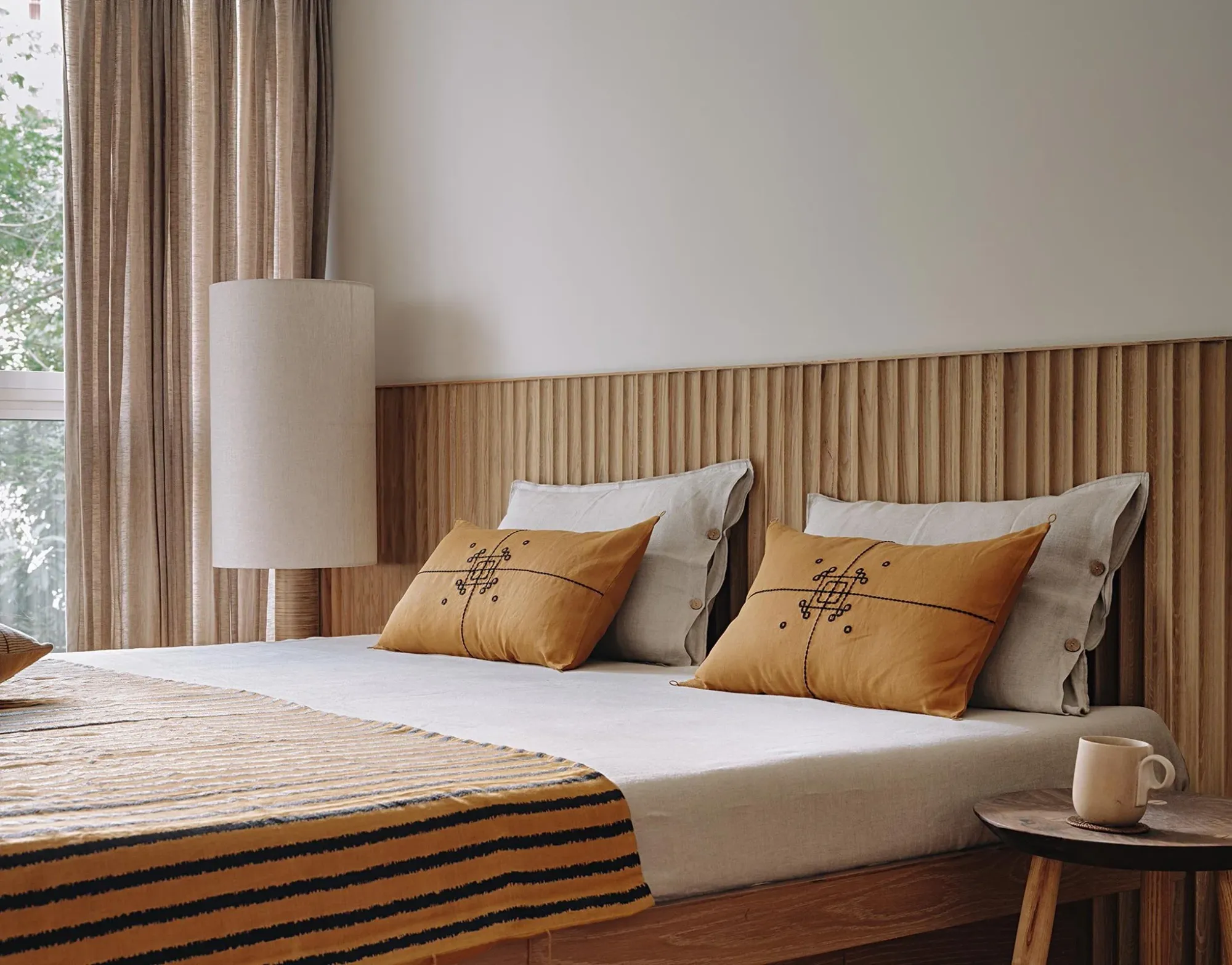
At its core, Japandi design is about finding balance. It's where the sleek, simple design of Japanese aesthetics meets the functional comfort of Scandinavian design. This perfect mix results in spaces that are both practical and beautiful, with a focus on clean lines, muted tones, and a tactile quality that adds warmth to the minimalist design.
Natural Materials: The Foundation of Japandi Bedrooms
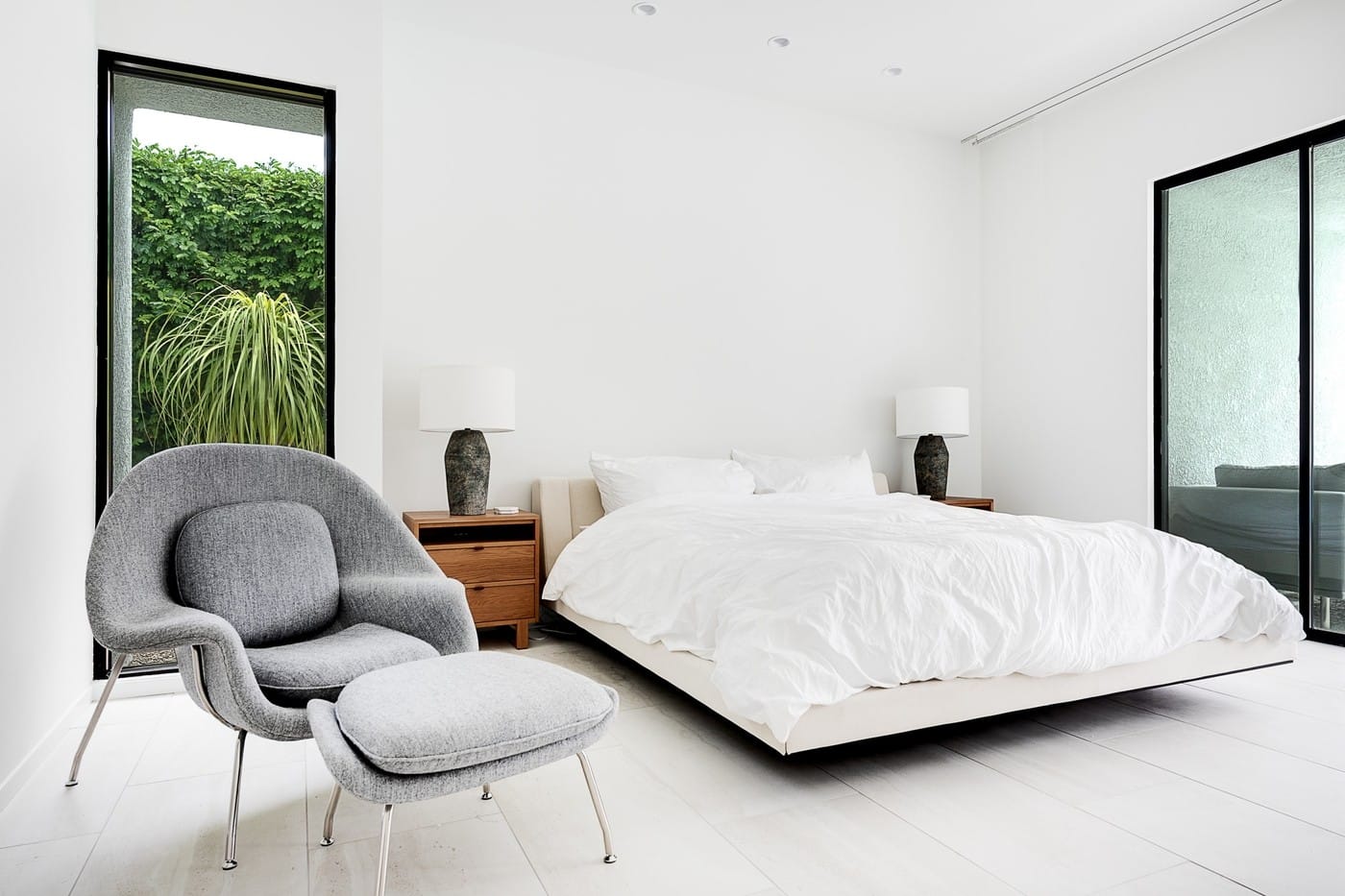
Natural materials are a vital part of any Japandi bedroom. Think natural wood for your platform bed, bamboo for your window treatments, and soft furnishings made from organic cotton or linen. These materials not only bring life to the space but also promote a sense of calm and connection to the outside world.
Neutral Colors: Creating a Calm Palette
Neutral colors are the backbone of the Japandi aesthetic. Earthy tones like beige, soft grays and muted greens create a tranquil space that soothes the mind. These colors work harmoniously with natural materials and are just the thing to set the stage for a peaceful retreat.
Clean Lines and Minimalist Furniture: The Art of Less is More
Japandi bedrooms thrive on the principle of less is more. Clean lines in bedroom furniture and minimalist furniture pieces ensure that the space feels uncluttered and open. A Japandi-style bedroom might feature a low-profile platform bed or a simple bedside table that serves its purpose without overwhelming the room.
Functional Decor: A Place for Everything
In a Japandi bedroom, every item has its place. Functional decor means choosing pieces that are not only aesthetically pleasing but also serve a purpose. Closed storage options keep clutter out of sight, while key pieces like a sleek lamp or a comfortable chair enhance the room's functionality.
Connection to Nature: Bringing the Outdoors In
One of the japandi bedroom ideas that resonate most with enthusiasts is the emphasis on connecting with nature. Sheer curtains that allow natural light to filter in, plants that add a touch of greenery, and artwork inspired by the natural world all help to create a space that feels like a sanctuary.
Lighting: Setting the Mood with Ambient Lighting
Ambient lighting is crucial in a Japandi bedroom. Soft, diffused light from lamps or wall sconces creates a warm and inviting atmosphere, perfect for winding down after a long day. The right lighting can transform the mood of the room, making it a cozy haven for relaxation.
Wall Art and Decor: Subtle Yet Impactful
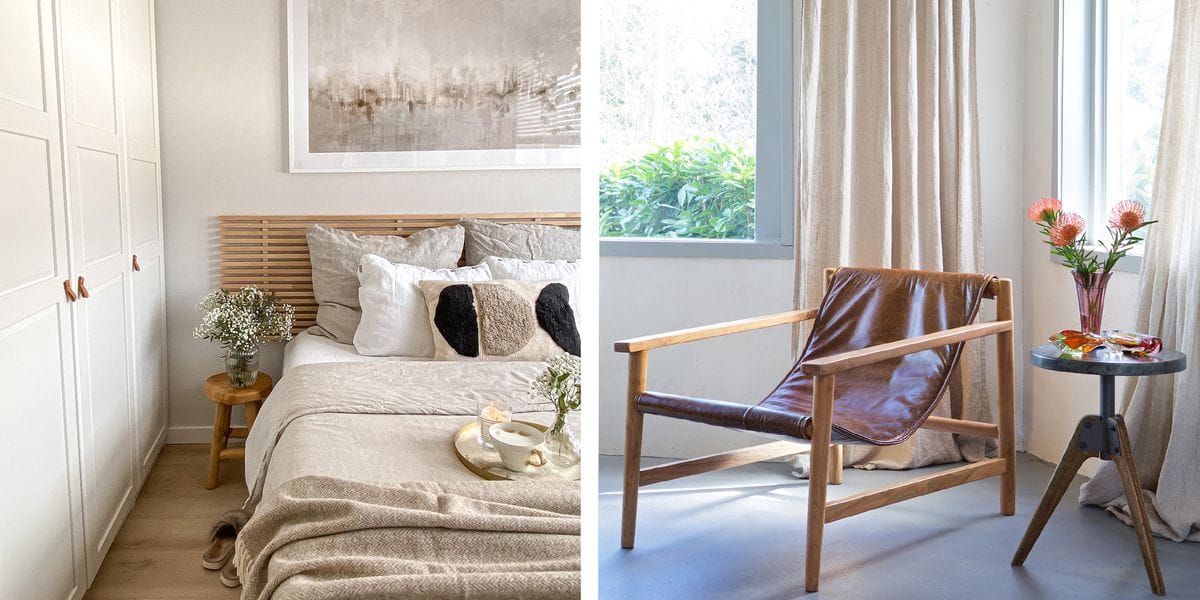
When it comes to wall art and decor, the Japandi style favors simplicity. Abstract art with geometric patterns or Japanese art with subtle patterns can add visual interest without causing distraction. The key is to choose pieces that complement the room's serene vibe.
Embracing Japandi Textures: A Sensory Experience
Japandi interiors are not just about visual appeal; they're a full sensory experience. When you step into a Japandi-inspired bedroom, the first thing you might notice is how the space feels. Textures play a crucial role in this design philosophy. Imagine running your hands over a rough, handcrafted pottery piece or the smooth grain of a wooden bedside table. These tactile elements are essential for creating a restful night's sleep environment, as they invite calmness and a connection to the natural world.
Incorporating a variety of textures can also enhance the overall aesthetic of the room. Think about adding a chunky knit throw or a soft, woven rug underfoot. These elements not only contribute to the comfort of the space but also serve as subtle visual details that embody the japandi interior ethos. By mixing and matching different textures, you create a layered look that's both sophisticated and cozy, perfect for a house that champions tranquility and simplicity.
Crafting a Restful Atmosphere
Creating a restful atmosphere is essential for a good night's sleep, and the Japandi bedroom design is particularly adept at fostering such an environment. The key lies in the harmonious blend of Japanese tranquility and Scandinavian functionality. To achieve this, consider incorporating elements like a soothing sound machine or a gentle bedside fountain. These additions can mask disruptive noises and emulate the calming sounds of nature, which are conducive to relaxation and can significantly improve sleep quality.
Moreover, the choice of bedding in a Japandi bedroom is crucial for comfort and a restful night's sleep. Opt for natural fiber linens such as bamboo, cotton, or linen, which are breathable and help regulate body temperature throughout the night. The texture of these materials also complements the Japandi aesthetic, adding to the overall sensory experience that encourages a peaceful slumber.
The Impact of Japandi on Sleep Quality
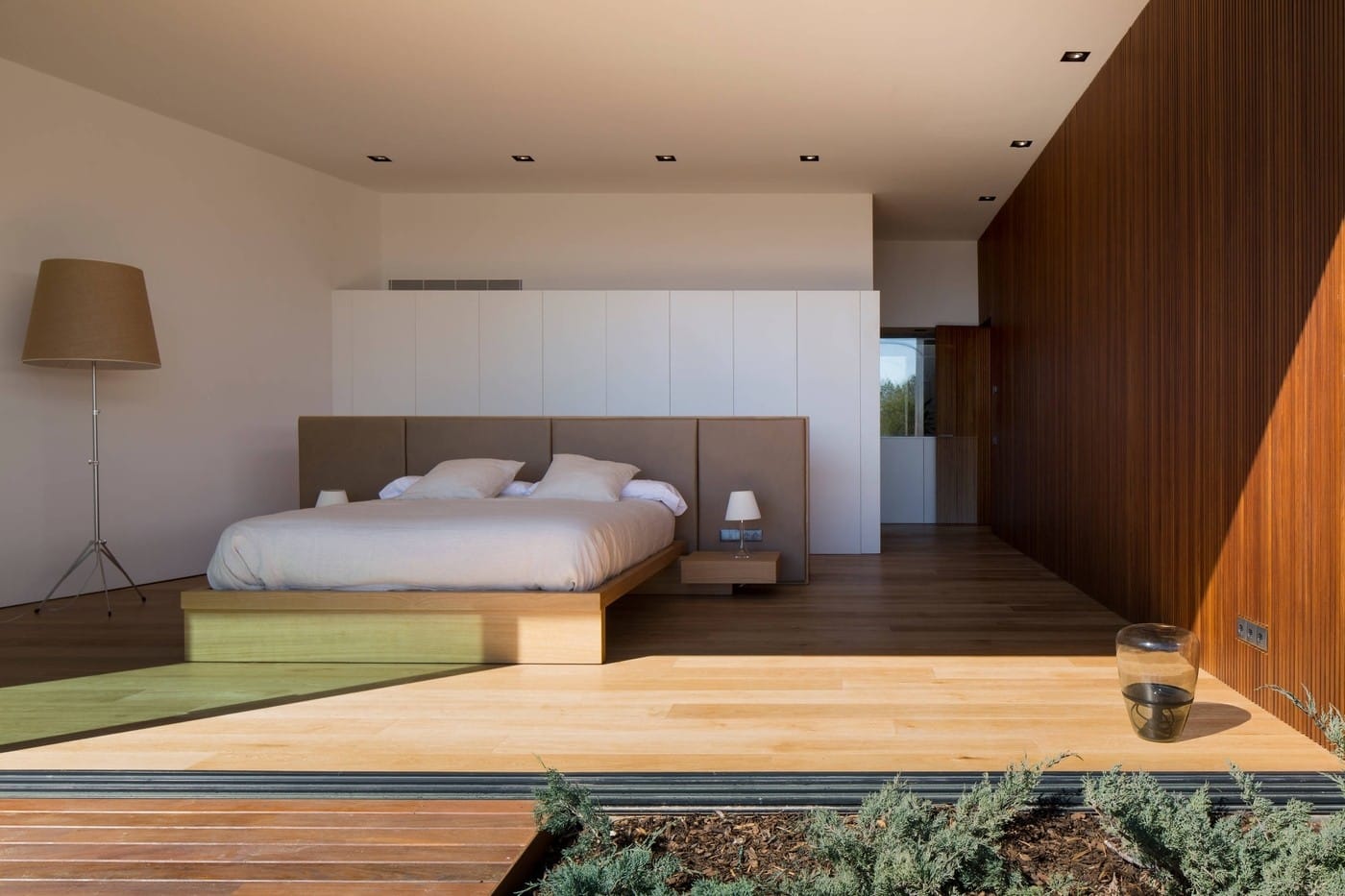
The Japandi bedroom isn't just a feast for the eyes; it's a sanctuary designed to enhance the quality of your slumber. The minimalist approach inherent in Japandi design eliminates unnecessary distractions, creating an environment that's conducive to a restful night's sleep. By prioritizing only the essentials, your bedroom transforms into a peaceful retreat where the day's stresses fade away, allowing your mind to unwind and prepare for sleep. This design philosophy not only caters to aesthetic pleasure but also to the psychological need for simplicity and order, which is crucial for relaxation.
Moreover, the Japandi style's emphasis on natural materials and soft textures contributes to a serene atmosphere that soothes the senses. Imagine a mattress topped with organic cotton linens, a chunky knit throw, and a pillow made of soft, breathable fabric—all inviting you to a restorative sleep. The tactile experience of these materials can have a calming effect, signaling to your body that it's time to slow down. The result is a bedroom that not only looks beautiful but also actively promotes a restful night's sleep.
Harmonizing Sleep Patterns with Japandi Rhythms
Incorporating Japandi design into your bedroom can also play a significant role in harmonizing your sleep patterns. The design's affinity for natural light during the day and warm, ambient lighting at night aligns with your body's circadian rhythm, which is essential for a restful night's sleep. By using sheer curtains that filter daylight and lamps that emit a soft glow, you can create an environment that signals your body when it's time to wake up and when it's time to wind down. This subtle yet effective use of lighting can help regulate your sleep cycle, leading to more consistent and rejuvenating rest.
Furthermore, the Japandi aesthetic's focus on a connection to nature can be extended to the soundscape of your bedroom. Consider a small, decorative fountain that adds a gentle, rhythmic sound of flowing water, or wind chimes that provide a soft, melodic background. These natural sounds can be incredibly soothing and are often used in sleep therapy to help individuals achieve a restful night's sleep. By thoughtfully curating the auditory experience in your Japandi bedroom, you can further enhance the quality of your rest.
Mindfulness and Sleep Hygiene
In a Japandi bedroom, the concept of mindfulness extends to sleep hygiene, which is the practice of ensuring that your sleeping environment and habits are optimized for the best possible rest. This includes maintaining a consistent sleep schedule and creating pre-sleep rituals that signal to your body that it's time to wind down. For instance, a few minutes of meditation or gentle stretching on a tatami mat can be a perfect way to transition from the busyness of the day to the tranquility of the night.
Additionally, the Japandi design philosophy can be applied to the organization of the bedroom to support sleep hygiene. Keep electronic devices out of the bedroom or stored neatly away to reduce exposure to blue light before bedtime. Instead, fill your space with books or journals that encourage reflection and relaxation. By curating a bedroom environment that prioritizes rest, you're setting the stage for a restful night's sleep every night.
Japandi Color Schemes: A Symphony in Harmony
The color palette of a Japandi bedroom is like a carefully composed symphony, each hue working in harmony to create a serene and restful night's sleep. Neutral tones are the foundation, with shades of white, beige, and grey providing a soothing backdrop. But Japandi isn't afraid of color; it's about choosing the right accents to complement the space. Soft pastels or deep, muted colors can add depth and interest without overwhelming the senses.
When selecting colors for a Japanese-inspired bedroom, consider the psychological effects they can have. Blues and greens are known for their calming properties, making them ideal choices for a restful sleeping environment. These colors can be introduced through accessories like cushions, throws, or artwork. Remember, the goal is to create a cohesive and balanced space that feels like a sanctuary within the house, a place where the hustle and bustle of the outside world fades away.
Soft Furnishings: The Tactile Element
Soft furnishings in a Japandi bedroom are all about texture. Duvet covers, pillows, and throws in different textures add warmth and comfort to the space. These elements should invite touch and contribute to the overall sense of tranquility.
The Perfect Bed: Choosing a Platform Bed
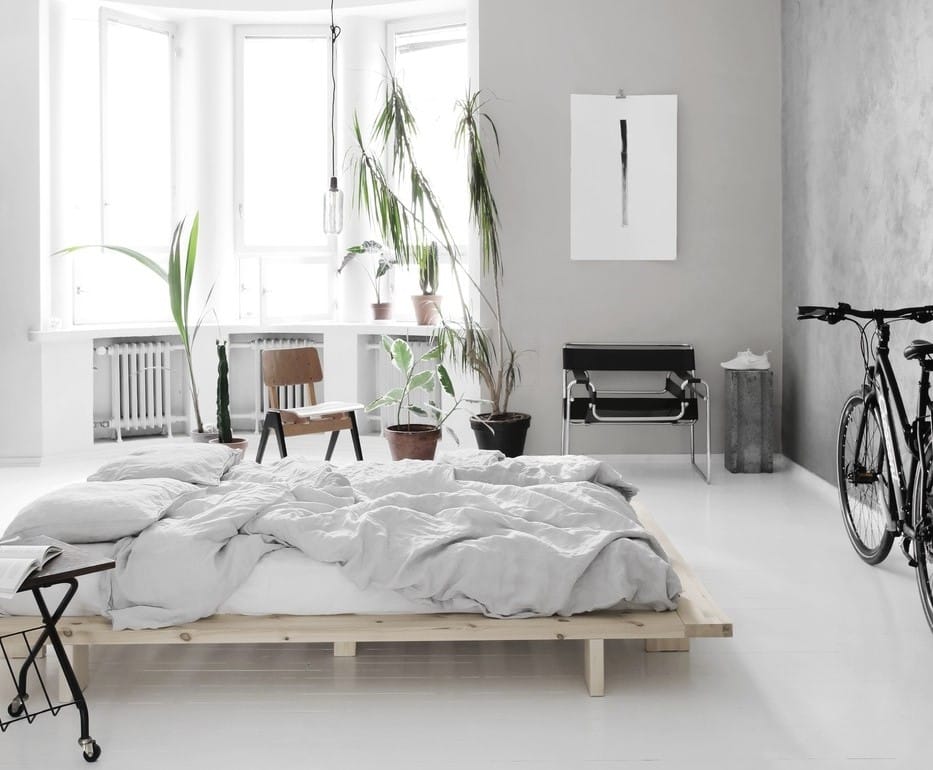
The platform bed is a staple in Japandi bedrooms. Its low height and simple design embody the minimalist aesthetic while providing a sturdy and comfortable foundation for a restful night's sleep. Opt for a bed made from natural wood to stay true to the Japandi ethos.
Incorporating Japanese and Scandinavian Elements
To truly capture the Japandi aesthetic, it's important to blend elements from both Japanese and Scandinavian design. This might mean pairing a Scandinavian-inspired wool rug with Japanese-inspired sliding doors or combining a sleek Scandinavian lamp with a Japanese folding screen.
The Role of Texture: Adding Depth and Warmth
Texture plays a significant role in Japandi bedrooms. It's about creating depth and interest through the use of different materials. A woven rug, a knitted throw, or a bamboo screen can all contribute to the room's layered look while maintaining the overall minimalist theme.
Choosing the Right Plants: A Touch of Greenery
Plants are an increasingly popular addition to Japandi bedrooms. Not only do they bring a touch of nature indoors, but they also help to purify the air. Choose plants that are easy to care for and that complement the room's calm aesthetic, such as a peace lily or a snake plant.
The Importance of Personal Space

In Japandi design, personal space is sacred. It's about creating a retreat where you can unwind and recharge. This means designing your bedroom to be a reflection of your personal needs and preferences, ensuring that it's a place where you feel completely at ease.
Storage Solutions: Keeping Clutter at Bay
Japandi bedrooms prioritize organization and tidiness. Smart storage solutions like built-in wardrobes, under-bed drawers, or multi-functional furniture pieces help to keep the space free of clutter, contributing to the room's peaceful ambiance.
Window Treatments: Maximizing Natural Light
Window treatments in a Japandi bedroom should maximize natural light while providing privacy when needed. Sheer curtains or blinds made from natural materials are ideal, as they allow light to enter the room while maintaining a connection to the outdoors.
The Final Touches: Accessories and Accents
Accessories and accents in a Japandi bedroom should be chosen with care. A single piece of pottery, a beautifully framed piece of art, or a handcrafted wooden bowl can serve as a focal point without overwhelming the space. These final touches should enhance the room's minimalist charm.
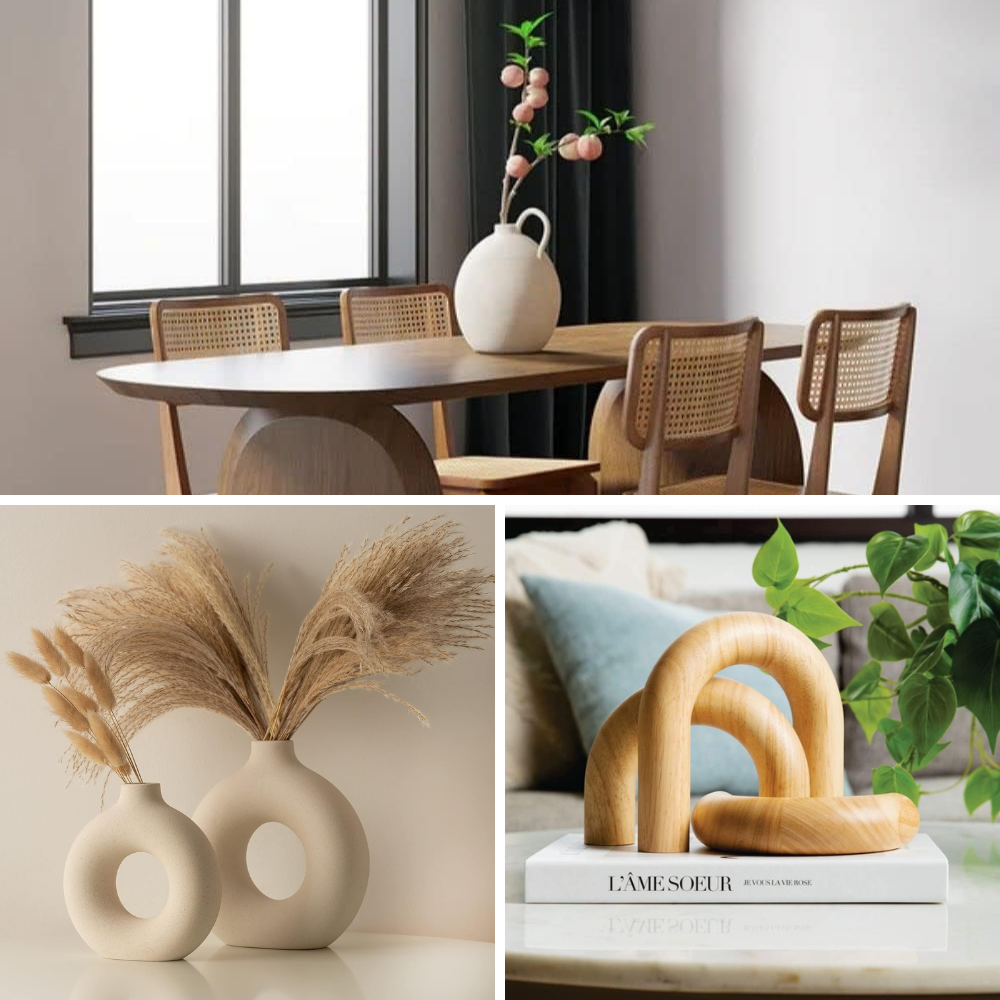

What is the Japandi style?
Japandi style is a design aesthetic that blends the minimalist and functional aspects of Japanese and Scandinavian design. It emphasizes natural materials, neutral colors, clean lines, and a connection to nature, creating a serene and uncluttered space.
How can I incorporate Japandi design into my bedroom?
To incorporate Japandi design into your bedroom, focus on using natural materials like wood and bamboo, choose neutral and earthy tones for your color palette, select minimalist furniture with clean lines, and add functional decor that serves a purpose. Incorporate natural light, plants, and soft furnishings to add warmth and texture.
What kind of furniture works best in a Japandi bedroom?
Furniture that works best in a Japandi bedroom includes pieces with simple, clean lines and a minimalist design. Platform beds, low-profile bedside tables, and functional storage solutions that keep clutter out of sight are ideal for maintaining the Japandi aesthetic.

Creating a Japandi bedroom is about embracing the principles of simplicity, nature, and functionality. By combining natural materials, neutral colors, and minimalist design, you can create a space that is both aesthetically pleasing and deeply relaxing. Remember to incorporate clean lines, functional decor, and a connection to the natural world to achieve the perfect Japandi aesthetic. With these guidelines in mind, you're well on your way to designing a tranquil bedroom retreat that embodies the best of both Japanese and Scandinavian design.

